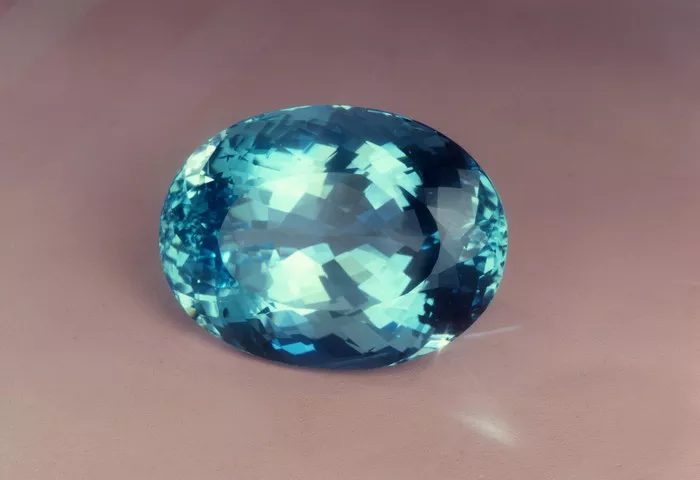Raw aquamarine is a stunning gemstone known for its tranquil blue color and soothing energy. As with any gemstone, it’s essential to ensure that the aquamarine you have is genuine. Raw aquamarine specimens can vary widely in appearance, and distinguishing a real aquamarine from an imitation or synthetic stone can be challenging. In this article, we will explore various methods and techniques to help you determine if a raw aquamarine is real.
Understanding Aquamarine
Aquamarine is a variety of the mineral beryl, which also includes other gemstones such as emerald and morganite. Its name is derived from the Latin words “aqua” and “marina,” meaning “water of the sea,” reflecting its captivating blue color reminiscent of the ocean. Aquamarine typically ranges from light blue to greenish-blue hues, with the most prized specimens exhibiting a vivid, intense blue color.
Aquamarine is found in various locations around the world, including Brazil, Madagascar, Nigeria, and Afghanistan. The gemstone’s popularity in jewelry and crystal healing has led to an increase in demand, making it essential for consumers to be able to identify real aquamarine from fake or synthetic alternatives.
How to Tell if Raw Aquamarine is Real
There are several methods and techniques you can use to determine if a raw aquamarine is real:
Color: One of the most distinctive features of aquamarine is its color. Genuine aquamarine typically exhibits a range of blue hues, from pale, icy blues to deeper, more intense blues. Look for raw aquamarine specimens that have a consistent, even color throughout the crystal. Be wary of stones that appear too saturated or intense in color, as they may be dyed or artificially treated.
Transparency: Aquamarine is known for its transparency, allowing light to pass through the crystal and create a radiant glow. Hold the raw aquamarine specimen up to a light source and observe how much light penetrates the stone. Genuine aquamarine will have a high level of transparency, with minimal to no visible inclusions or cloudiness. Stones that appear cloudy or opaque may be synthetic or imitation aquamarine.
Crystal Structure: Examine the crystal structure of the raw aquamarine specimen for any signs of natural growth patterns or formations. Genuine aquamarine crystals often exhibit hexagonal prisms with flat, smooth faces and well-defined edges. Look for symmetrical, geometric shapes and formations within the crystal, as these are indicative of natural beryl crystals.
Hardness: Aquamarine has a hardness of 7.5 to 8 on the Mohs scale, making it relatively durable and resistant to scratching. Test the hardness of the raw aquamarine specimen by scratching it with a harder material, such as a quartz crystal or a steel nail. Genuine aquamarine should not scratch easily, whereas softer materials may leave marks or scratches on the surface of imitation or synthetic aquamarine.
Inclusions: Inclusions are natural imperfections or characteristics within a gemstone that can provide valuable information about its authenticity. While some inclusions are expected in natural aquamarine due to its formation process, excessive inclusions or irregularities may indicate a synthetic or imitation stone. Use a jeweler’s loupe or magnifying glass to examine the raw aquamarine specimen for any visible inclusions, fractures, or flaws.
Specific Gravity: Specific gravity is the ratio of the density of a substance to the density of water. Genuine aquamarine has a specific gravity ranging from 2.68 to 2.74, depending on its composition and origin. You can measure the specific gravity of the raw aquamarine specimen using a gemological scale or water displacement method to assess its density and determine its authenticity.
Refractive Index: The refractive index is a measure of how light is bent or refracted as it passes through a gemstone. Genuine aquamarine typically has a refractive index ranging from 1.567 to 1.590, depending on its composition and origin. You can use a refractometer to measure the refractive index of the raw aquamarine specimen and compare it to the known values for genuine aquamarine.
Conclusion
Determining if a raw aquamarine is real requires careful examination and testing of its color, transparency, crystal structure, hardness, inclusions, specific gravity, and refractive index. By using these methods and techniques, you can confidently identify genuine aquamarine specimens and distinguish them from synthetic or imitation stones. Whether you’re a gemstone enthusiast, jewelry collector, or crystal healer, knowing how to tell if raw aquamarine is real ensures that you can enjoy its beauty and energy with confidence and peace of mind.


